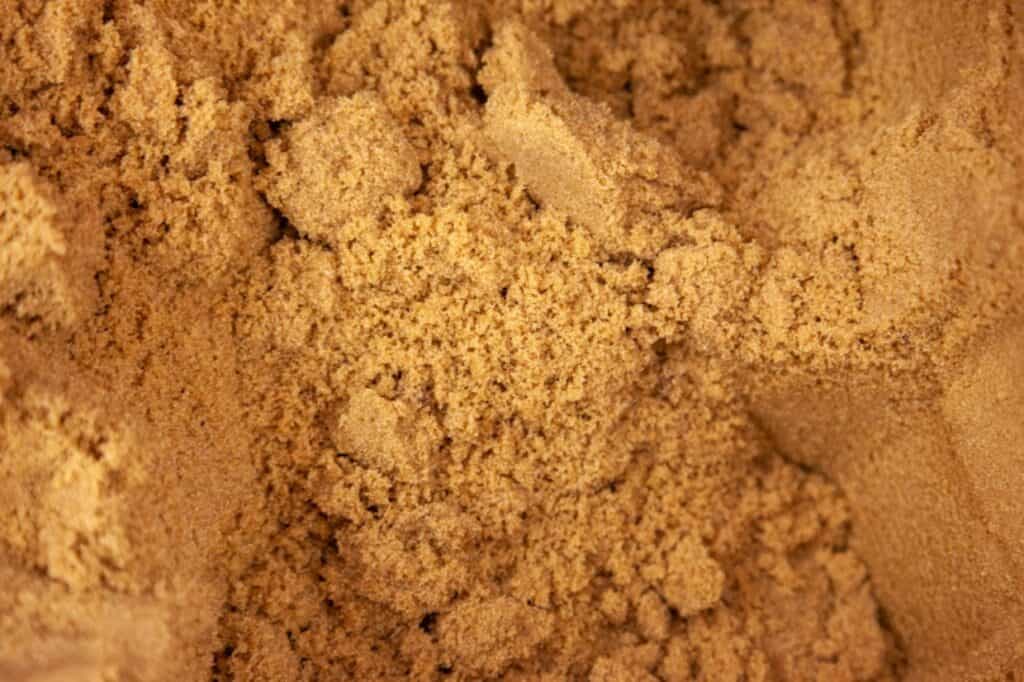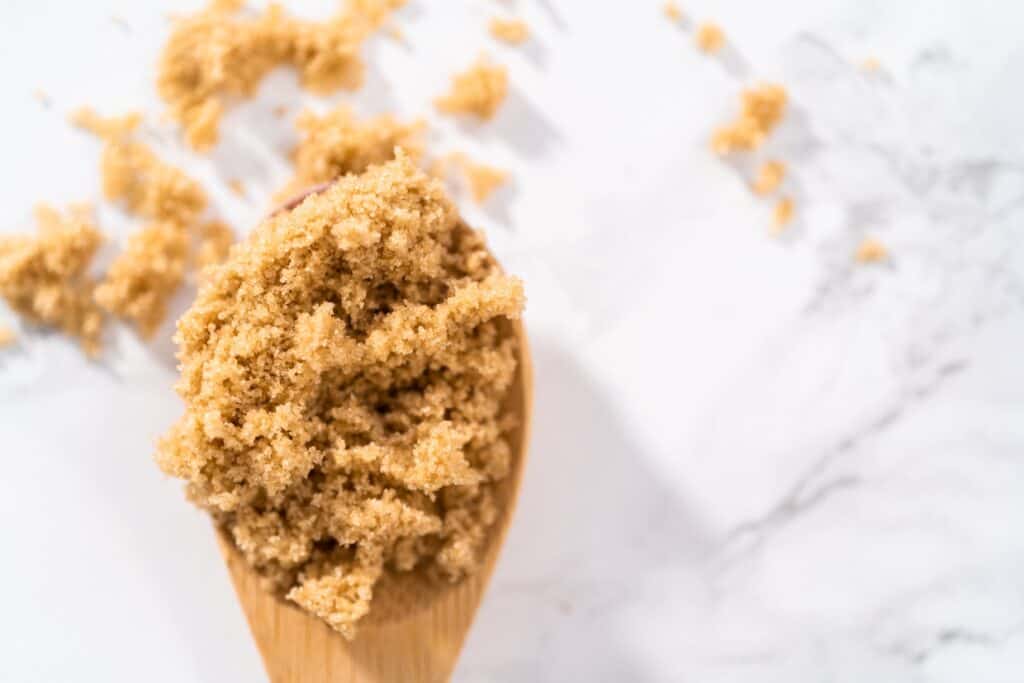You’re all set to bake a batch of your favorite cookies only to discover that your brown sugar is hard as a rock. Don’t fret. There are simple solutions to this age-old dilemma. Learn how to soften brown sugar and save your baking and your wallet with these helpful tips and tricks even when it’s rock solid.

What is brown sugar?
Brown sugar used to be an unrefined or partially refined soft sugar consisting of sugar crystals with some residual molasses content, but these days most brown sugar simply has molasses added to refined white sugar.
The amount of molasses added determines the color and flavor of the brown sugar. Light brown sugar has a higher proportion of white sugar and a milder flavor, while dark brown sugar has a higher proportion of molasses and a stronger flavor.
Why do you need to use brown sugar?
Brown sugar is used in a variety of recipes, including baked goods, sauces, and glazes. It is also used as a sweetener in coffee and tea.
Brown sugar has a richer, more complex flavor than white sugar because of the molasses. Brown sugar adds a deeper color to your baked goods, too.
It is also moister than white sugar, again from the added molasses. The moisture in brown sugar helps keep baked goods moist and chewy.
Looking for some new ideas for your newly softened brown sugar? Try making brown sugar cookie dough truffles, a brown sugar caramel sauce, or brown sugar banana bread.

Can you substitute white sugar for brown sugar?
While it is possible to substitute white sugar for brown sugar in some recipes, the results may not be as desired.
Brown sugar has a higher moisture content than white sugar, which can affect the texture of baked goods. Brown sugar also has a richer, more complex flavor than white sugar, which can alter the taste of the final product.
FDL’S 75 Best Bites

Our cookbook with 75 tasty recipes will be your go-to kitchen companion for easy dinners with ad-free recipes right at your fingertips. Crafted by experienced chefs and recipe developers, this collection offers a treasure trove of tried-and-true dishes that make mealtime a breeze.
Get the Recipe: FDL’S 75 Best Bites
In general, it is best to follow the recipe as written. If you do need to substitute white sugar, you may need to adjust the amount of other ingredients in the recipe. For example, you may need to add more liquid or fat to compensate for the lack of moisture in white sugar.
Why does brown sugar get hard?
That added moisture in brown sugar can easily evaporate over time, and that’s what causes it to get hard.
Over time, as brown sugar gets exposed to air, it will harden, especially when the air in your home is dry.
Brown sugar can also become hard if it is exposed to heat. This is because the heat causes the moisture in the sugar to evaporate.
Brown sugar will naturally become harder over time as the molasses in the sugar starts to crystallize.
How do you keep brown sugar from hardening?
If you want to keep your brown sugar soft, it is important to store it in an airtight container in a cool, dry place. Ideally, you should purchase only the amount that you plan to use within the next few months.
What is the best way to soften hard brown sugar?
Microwave method
“The easiest way to soften a hard chunk of brown sugar is to place it in a bowl and cover it with a damp paper towel. Microwave the sugar for 20-second intervals until it softens.”
— Jere’ Cassidy, One Hot Oven
This method is the quickest way to soften your brown sugar. Make sure to stir the brown sugar and microwave it for an additional 15 to 20 seconds, if necessary.
Be careful not to overcook the brown sugar, as it will become hard again.
Oven method
Preheat your oven to 250 degrees Fahrenheit.
Place the brown sugar in an oven-safe bowl. Bake this for five to 10 minutes, checking at five minutes and every couple minutes after that to see if the brown sugar is soft.
Again, be sure that you remove the brown sugar as soon as it feels soft. If you keep it in the oven too long, it will harden quickly as it cools.

Bread or apple method
“My grandmother taught me this and it works like a charm. Simply put a slice of fresh homemade bread in with the brown sugar overnight. The next morning the brown sugar is soft and the bread is hard as a rock.”
— Sarita Harbour, An Off Grid Life
This trick works with both soft, white bread or a couple of slices of fresh apple in a container with the brown sugar. The apple variety is not important, so feel free to use whatever you have on hand.
When you add the apple to the container, try to place it with the peel against the brown sugar, as the sugar will melt and stick to the apple flesh.
Seal your container with as little air as possible, and let it sit for 24 hours. The moisture from the bread or apple will help to soften the brown sugar.
Remove the apple or bread after 24 hours, and ensure you keep the brown sugar well sealed after that. If it is still hard, you can repeat again with a new slice of apple or bread.
Terra Cotta Method
You can easily find a terra cotta bear, but any food-safe and clean terra cotta works. Place a piece of terra cotta in a container with the brown sugar.

Like with the bread or apple, seal the container and let it sit for 24 hours. The terra cotta will absorb moisture from the air and help to soften the brown sugar.
Many people place a terra cotta bear inside their sealed containers of brown sugar as soon as they open a new bag. This helps slow the hardening process so your brown sugar stays soft for far longer.
What if these tips to soften brown sugar don’t work?
If your brown sugar is still hard after using one of the above methods, you can add a few drops of water or honey to the sugar, then stir it until it is soft. You can also try using a food processor or blender to break up the hard sugar.
Michelle Price is a food and travel writer at Honest and Truly who almost has an empty nest. She loves to provide both the inspiration and the confidence you need to help you get into the kitchen and on the road to enjoy new flavors and experiences.